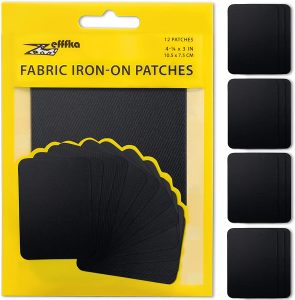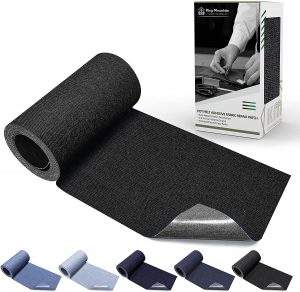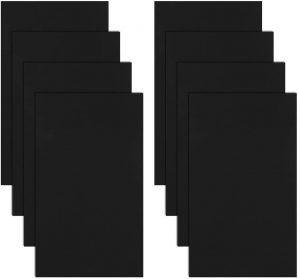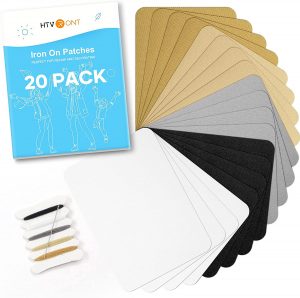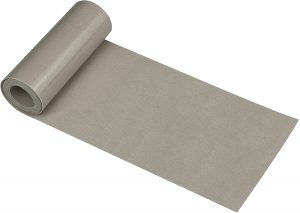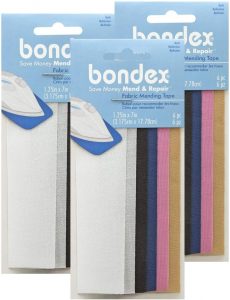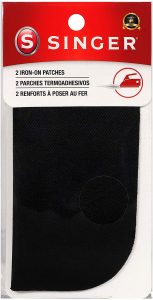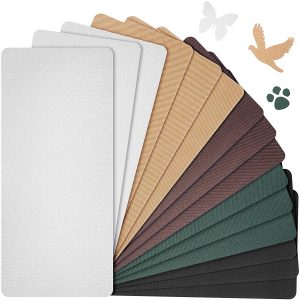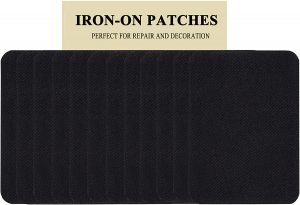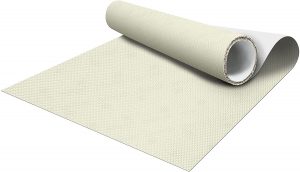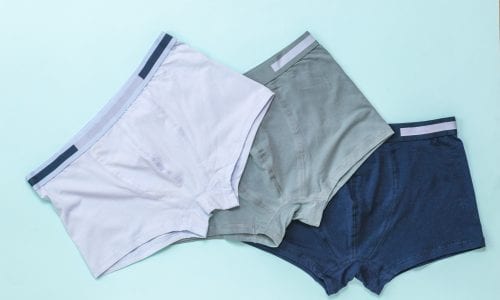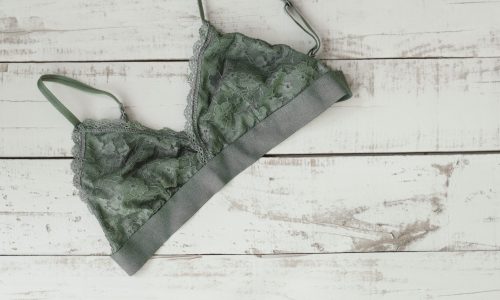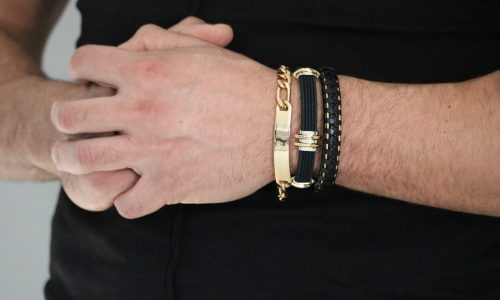The Best Clothing Patches
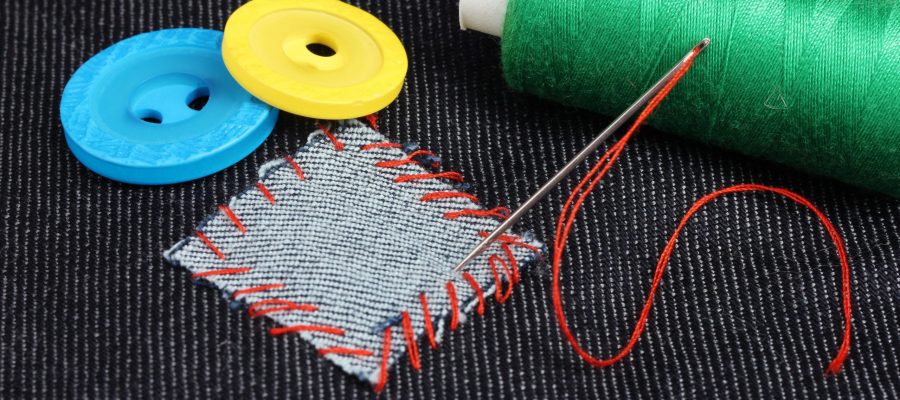
Our Review Process
Don't Waste Your Money is focused on helping you make the best purchasing decision. Our team of experts spends hundreds of hours analyzing, testing, and researching products so you don't have to. Learn more.
Our Picks For The Top Clothing Patches
- 1. ZEFFFKA Cotton Iron-On Clothing Patches, 12-Piece
- 2. KING MOUNTAIN Melt Adhesive Cotton Clothing Patch
- 3. Pimoys Waterproof Nylon Clothing Patches, 8-Piece
- 4. HTVRONT Iron-On Nylon Clothing Patches, 20-Piece
- 5. Azobur Washable Cotton Iron-On Clothing Patch
- 6. Bondex Iron-On Mending Tape Clothing Patches, 18-Piece
- 7. SINGER Durable Cotton Iron-On Clothing Patches, 2-Piece
- 8. Syhood Iron-On Twill Fabric Clothing Patches, 15-Piece
- 9. J.CARP Machine Washable Cotton Clothing Patches, 12-Piece
- 10. KING MOUNTAIN Self-Adhesive Polyester Clothing Patch
You’ll get 12 iron-on fabric patches in this set, each measuring 3 inches by 4¼ inches. The material is black cotton, making it perfect for repairing holes in pants, blouses and dark-colored jeans. To attach this patch to your clothing, simply preheat your iron and run it over the patch, applying pressure, for 60 seconds.
Adjustable FitSized 3 by 4¼ inches, these patches can work on a variety of hole sizes.
Patch your favorite pair of jeans with this roll of material, which comes in a variety of denim colors. The fabric is 100% cotton to keep you comfortable while also resisting wear. The 0.2 mm hot-melt adhesive film is designed to maintain its hold even after regular wear and washing.
Sturdy and ReliableA thick hot-melt adhesive film gives this patch extra durability, ensuring it will last through many uses.
The eight patches in this set each measure 7.79 inches by 3.85 inches but can be cut to fit. The thin build even allows you to cut them into various shapes to create a certain look. The material is nylon with an adhesive that’s strong enough to hold without weighing fabrics down.
Versatile OptionThe lightweight but durable build of these patches lets you use them on tents, clothing, umbrellas or any other material.
The color variety sets these patches apart, with a mix of neutral tones that can work with a variety of items in your wardrobe. The material is a soft nylon fabric that will keep you comfortable, and 30% more glue will ensure it stays in place. Each patch measures 3 inches by 4.9 inches but can be cut to the size you need.
Multiple Color OptionsEach 20-patch pack has a variety of colors, and you can choose from multiple color options.
Buying Guide
The clothing industry has changed over the years, as manufacturing processes have allowed garments to be produced more efficiently. That means there’s no shortage of affordable clothing, made to match the latest trends.
The practice is now so common, there’s a name for it: fast fashion. With fast fashion, the top priority is getting clothing to market quickly and affordably. This often means clothing doesn’t last for years, leading some to call it “disposable.” With trends coming and going so quickly, some fashionistas don’t mind having a garment that only lasts one season.
But that doesn’t mean your clothing truly has to be disposable. When you notice wear on your garments, there are still some things you can do to give them a little more life. You can replace lost buttons or add some extra stitching to seams. You can bleached stains or discolored whites and replace zippers in jeans and pants.
One of the easiest fixes you can make is to patch up holes. Many of these patches use heat-activated glue, so you’ll need a clothes iron and a flat surface. Simply preheat your iron, then set the patch on the interior of your garment. You’ll apply slight pressure, holding the iron over the patch until a bond is formed. With the right patch, you can turn the garment right side out and have it blend perfectly with the original material.
Clothing patches aren’t just for concealing holes, though. You can typically cut them into various shapes, which is great for customizing them to your needs. But this also means you can shape them into hearts, stars and other shapes, then apply them to the top of your clothing to create a look. Some choose to liven up a plain pair of jeans or a denim jacket using this approach.
What to Look For
- A large part of making a patch blend well is choosing the right color. You can find fabric patches in various neutrals, as well as shades of denim and bright pastels. Pay close attention to the material, too, to make sure it will blend.
- Comfort is a consideration when you’re choosing a material for your garment. The side that faces the skin should be soft and comfortable, with the glue well contained on the other side so it won’t become an irritant.
- If you primarily wear knits, you might not own a clothes iron. You can actually use a hair straightener or curling iron to get the level of heat you need.
- An ironing board can come in handy for applying your clothing patch. But if you don’t have one, you can get the same effect by setting your garment on a flat towel on top of a table. The towel will help protect the surface beneath.
- Once applied, your clothing patch will likely endure numerous trips through your washer and dryer. Make sure you choose one with a strong adhesive that can handle the rigors of regular wear and cleaning.
- If you find a clothing patch doesn’t have the hold you need, you can reapply it using a glue gun.
- Clothing patches are often sold in sets. You might only need one, but hang on to the extras. You’ll be able to use them if the first patch doesn’t hold or if you have holes in similar garments in the future.
- You can find clothing patches sold in multicolor sets. This will ensure you have patches on hand for when other items in your wardrobe need repair.
- Some patches are sold in rolls instead of individual squares. This roll lets you tear off only the size you need.
- Clothing isn’t the only thing you can repair using patches. These same patches can be applied to any fabric, including tents, umbrellas and handbags. If it’s an item you rely on for shelter during rainy weather, though, make sure the patch won’t let water through.
More to Explore
If you spot a hole in an article of clothing, take a close look. If the hole formed at a seam, chances are wear is to blame. However, if it’s an uneven hole located in an area separate from a seam, you might have a pest problem.
Moths are the most likely culprit when holes are found in clothing. Believe it or not, though, the moths don’t cause the holes themselves. Moths lay eggs that hatch into worm-like larvae, and those larvae consume the keratin typically found in animal-based fibers used to make clothing. Silk and wool are especially scrumptious to moth larvae.

